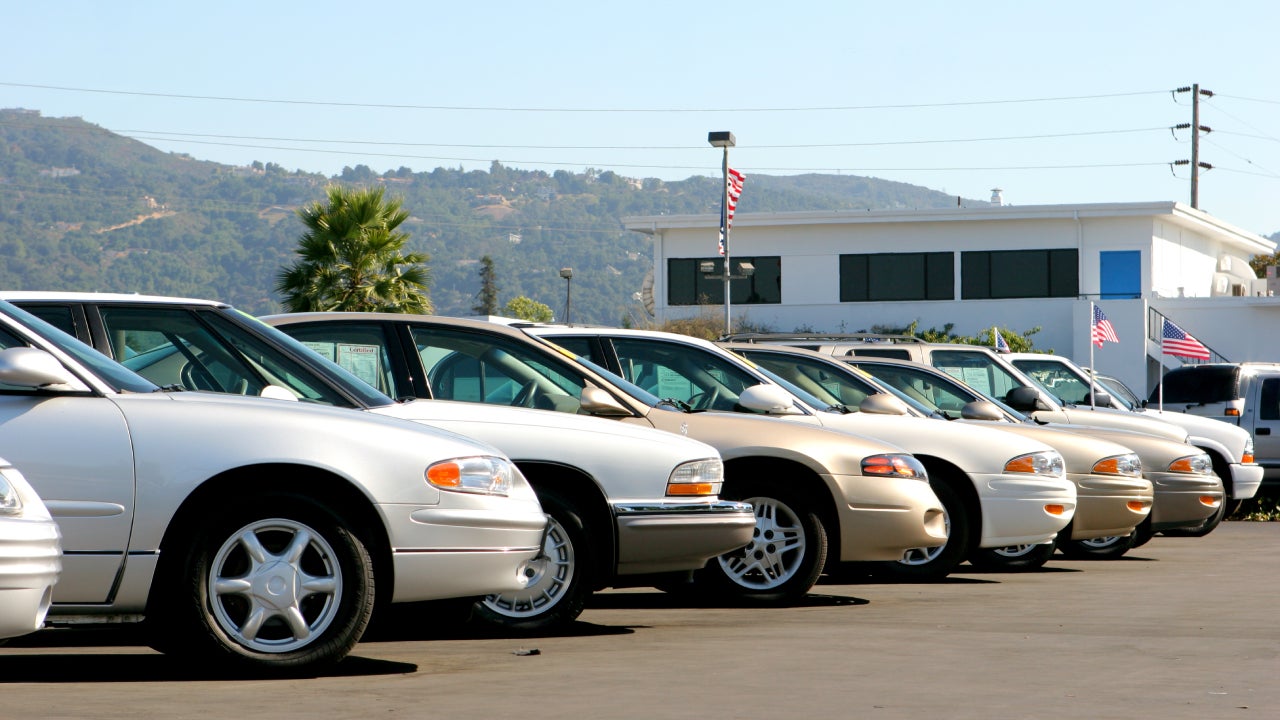How to get car insurance for new drivers




Key takeaways
- All new drivers, regardless of age or experience level, are legally required to obtain car insurance coverage.
- Age, driving record, location, gender, marital status, vehicle type, credit history and coverage limits are all factors that can determine a new driver’s car insurance rate.
- Minimum coverage car insurance policies provide basic liability protection, while full coverage policies offer more comprehensive protection.
- New drivers should conduct research, know what coverage they need, have their personal and vehicle information on hand, and compare options to find the best car insurance policy for their needs and budget.
- The average cost of full coverage insurance for 16-year-olds on their parents’ policy is $5,675 per year.
Even though many people assume new drivers are teenagers eager to get behind the wheel, newly-licensed drivers come in all ages. A new driver might be a newly licensed adult or immigrant, or even someone who took a break from driving for medical or lifestyle reasons. New drivers can usually expect to pay more for auto insurance, but other factors help determine your exact rate.
Who needs new driver car insurance?
All new drivers need a new car insurance policy. While the term “new driver” often leads to assumptions that only young adults and teenagers qualify, car insurance companies have different definitions. Here are the groups that could be considered as a new driver under their stipulations:
- Newly licensed teen drivers
- Adults who are newly licensed
- Immigrants and foreign nationals
- Any drivers of any age with a gap in insurance coverage or licensing
These new drivers will typically pay higher-than-average rates for their car insurance policies. For example, the average cost of car insurance is $2,542 per year for a full coverage policy, but an 18-year-old driver on their own policy pays an average of $7,499 per year for the same coverage. This is due, in part, to there being more risk involved with insuring younger or less-experienced drivers.
How much is car insurance for new drivers?
New drivers typically pay higher-than-average rates for their car insurance policies. For example, the average cost of car insurance is $2,638 per year for a full coverage policy for a 40-year-old. However, an 18-year-old driver on their own policy pays an average of $7,310 per year for the same coverage. This is due, in part, to there being more risk involved with insuring younger or less-experienced drivers.
While years of driving experience can play a role in your cost of coverage, age is typically a bigger determinant in states that allow it as a rating factor. Young drivers tend to engage in riskier driving habits, so they pay some of the highest average rates. As drivers age and become more experienced behind the wheel, rates tend to drop. That said, young drivers who remain on their parents’ policies may be seen as less risky than those on their own policies. For example, a 21-year-old driver on their own policy pays an annual average of $4,450 per year for full coverage, compared to $3,678 for a driver on their parents’ policy.
Factors that determine car insurance rates for new drivers
When considering car insurance, keep in mind that companies have varied factors for determining rates. Two important factors are your age and your driving record. But it does not stop there, although you’re likely to see higher premiums for younger drivers or those without a stellar driving history. The complete list includes:
- Age: Teenage drivers under 18 generally have the highest insurance rates. Premiums usually decrease around age 25 when drivers are seen as more responsible. The younger you are, the more you’ll typically pay. In Hawaii and Massachusetts, insurers are not allowed to consider your age when calculating your premium; however, in Massachusetts, years of driving experience are still allowed to be considered, so younger drivers typically still pay more.
- Driving record: A clean record with no at-fault accidents or moving violations saves you money. Even one incident can raise rates substantially. New driver insurance typically costs more because these drivers have very brief driving histories.
- Location: Insurance costs vary widely by state and ZIP code. Urban areas with more accidents, thefts and lawsuits have higher premiums. New drivers in low-risk rural settings typically pay less.
- Gender: Statistics show young male drivers tend to have more accidents. In most states, teenage boys pay more than teenage girls. California, Hawaii, Massachusetts, Michigan, North Carolina, Pennsylvania do not allow insurers to consider gender when calculating premiums.
- Marital status: Married drivers are viewed as more responsible and pay lower premiums. Single drivers have higher risk factors.
- Vehicle type: Sports cars, luxury vehicles and high-performance models cost more to insure. New drivers in standard vehicles usually save money.
- Credit history: In most states, a good credit-based insurance score means lower rates. New drivers may pay more with little or no credit established. California, Hawaii, Massachusetts and Michigan ban or restrict the use of credit as a rating factor.
- Coverage limits: Minimum required limits cost less but provide less protection, so drivers have to pay more out of pocket when filing claims. Higher limits cost more but reduce financial exposure in the case of at-fault accidents.
Types of car insurance for new drivers
When you are looking for car insurance for new drivers, it is important to look at all the available types of car insurance coverage. Insurance companies typically offer minimum coverage and full coverage auto policies, as well as additional endorsements that can be used to customize your policy.
Minimum coverage car insurance policies
While minimum car insurance coverage requirements vary by state, most minimum coverage policies only provide basic liability protection and may not fully cover expenses if an accident occurs. Though cheaper initially, skimping on coverage can lead to major out-of-pocket costs later. Common components of minimum coverage include:
- Bodily injury (BI) liability: Bodily injury liability coverage will help pay for medical expenses related to the other driver’s injuries if you cause an accident. If the other driver sues you for losses, it may also cover your legal fees.
- Property damage (PD) liability: This coverage pays toward property damage that you cause to others, like the other person’s vehicle repairs that occurred due to an at-fault accident.
- Uninsured/underinsured motorist coverage (UM/UIM): This type of coverage offers financial protection if you get into an accident with a driver who is uninsured or does not have enough insurance to cover your losses. It also covers damage from hit-and-run accidents and if you are struck by a vehicle as a pedestrian or while riding a bicycle. Keep in mind that uninsured motorist coverage for injuries is separate from the same type of coverage for property damage.
- Personal injury protection (PIP): Required in “no-fault” states where both parties’ insurance covers medical expenses regardless of fault. PIP pays for medical bills, lost wages and other accident-related costs for you and your passengers.
- Medical payments coverage (MedPay): This coverage helps pay medical expenses following an accident for yourself or any passengers in your vehicle. It is considered optional coverage in most states, but there are a few states that require drivers to carry this type of coverage.
Though tempting because of the lower premium, minimum coverage policies may have significant gaps. Going beyond state minimums can provide more comprehensive protection in the event of an accident, but it costs more upfront. New drivers must weigh these trade-offs carefully on how much insurance they really need.
Full coverage car insurance policies
Going beyond the basics may be wise for drivers wanting robust safeguards for their finances and assets, especially if they own a newer vehicle. Though full coverage can cost extra initially, it can prevent major out-of-pocket expenses if an accident occurs.
Full coverage policies typically include:
- Collision: This coverage will help pay to repair or replace your vehicle if you collide with another vehicle or something else that damages your vehicle, such as a tree, fence or light pole. It also covers rollover accidents.
- Comprehensive: This coverage pays for damage to your vehicle caused by a wide array of situations, like theft, storm damage, vandalism and animal damage.
Additional endorsement options
Beyond mandatory minimums and comprehensive full coverage policies, auto insurance providers offer a menu of optional endorsements to customize protection. Also called riders, these supplementary coverages allow drivers to tailor policies to their specific needs and budget. These may include:
- Towing and labor coverage: Towing and labor coverage may pay for the cost of towing your car to a repair shop and may also cover a certain amount of necessary labor charges to repair the issue that caused the vehicle to break down.
- Roadside assistance: This coverage provides roadside assistance coverage in case your vehicle breaks down or is stolen, or if you need to change a flat tire.
- Accident forgiveness: Some insurers offer an accident forgiveness endorsement that will prevent your premiums from rising after an accident. Keep in mind that not all accidents are covered and certain conditions must be met to qualify.
How to get car insurance for new drivers
The options can be endless when it comes to car insurance coverage. The abundance of choices can make the process of getting a car insurance policy feel daunting. Knowing what steps you should take to obtain your first car insurance policy may help. These include:
- Conduct thorough research. When choosing an auto insurance provider as a new driver, narrow the options by deciding your top priorities first, then consult reviews to compile a list of companies that offer those key factors to streamline decision-making and identify the best value based on your specific needs and budget. Conducting targeted research before getting quotes makes finding the ideal coverage more manageable.
- Know what coverage you need. Minimum coverage car insurance is typically the cheapest, but having higher liability limits and more coverage, like comprehensive and collision, could better protect your finances. It can be helpful to know which type of coverage is right for you, and any optional coverage types you may want, before getting quotes. Full coverage, which includes comprehensive and collision coverage, is typically required by your lender if you lease or finance your car.
- Have your personal and vehicle information on hand. Having your driver’s license number, vehicle make/model/VIN and personal info like your birthdate, address and Social Security number on hand streamlines the quote process. Insurers will need these specifics for all drivers listed on the policy to generate accurate premium estimates.
- Get personalized car insurance quotes. Policies and prices for coverage may vary by company, so it’s often helpful to get quotes from multiple providers. Most large insurance companies offer quotes online, but you may also speak to an agent to get a personalized quote. This can help you find the best fit for your needs and budget.
- Inquire about available discounts. Most insurance companies will offer various discount opportunities, such as bundling policies, good student, multi-car, airbags, usage-based and more. These discounts may help you save money on a new driver policy.
- Compare options and purchase a policy. With multiple premium estimates in hand, carefully evaluate each policy’s rates, exclusions, endorsements and customer service reputation. Determine the ideal fit for your budget and protection needs, complete required paperwork, and pay to activate coverage so you can legally and safely hit the road.




